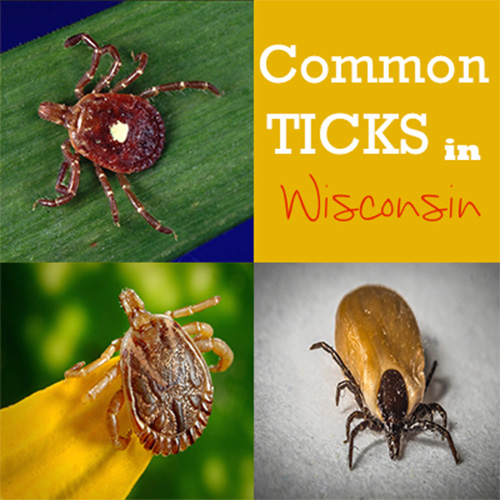Preventing Tick Bites and Embeddings
After long winters, the first thing I want to do is get out and enjoy the weather and fresh air. Heading through the long grass normally knocks off some unpleasant creepy crawlies onto my pants. Ticks!
As someone who spends a great amount of time around woods and even in my own yard. It is important to know a little something about ticks and preventing tick bites and embeddings.
How Many Tick Varieties Are There?
Did you know there are many types of ticks? 16 varieties in Wisconsin alone, or so I was told by a retired entomologist on one of my bird outings. However, only three types feed on human blood.
How Do Ticks Travel?
A myth is that ticks jump. They do not. They crawl and fall as I like to tell people. When I am out walking on the trails I hear all the time watch out for flying ticks. People must think they fly for some reason. I can assure you unless some bear is hiding in the woods with a stockpile of ticks and a sling slot – they do not fly.
When Are Ticks Out?
Ticks are out spring through fall, with the height months being June, July, and August in Wisconsin. For me, it just happens to be all the months we don’t have snow on the ground.
Tips For Preventing Tick Bites and Embeddings
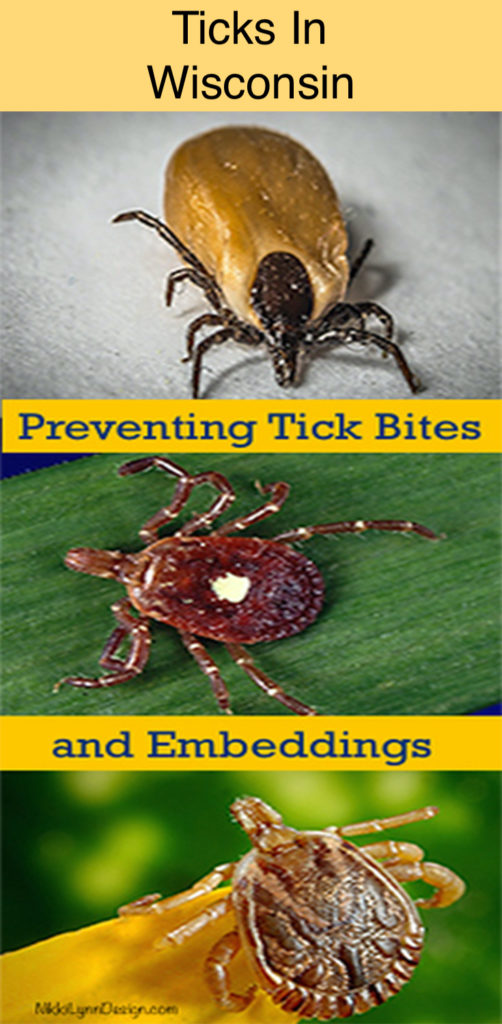
1.) Tuck your shirt into your pants and your socks over your pants. Leaving little skin exposed. If you wear light-colored clothing, you can see the ticks easily.
2.) Wear repellent with DEET containing at least 20% DEET (N,N-diethyl-meta-toluamide) on exposed skin or Permethrin on the outside layer of your clothing.
3.) Walk in the middle of trails avoiding long grass and bushes. Protection and education are our friends.
4.) Check your clothing and skin before returning to your vehicle and again at home.
5.) After spending time in tick-prone areas, conduct thorough tick checks on yourself, your children, and your pets. Pay close attention to areas like the hairline, underarms, groin, and behind the knees.
Three Very Common Ticks
1.) Wood Tick
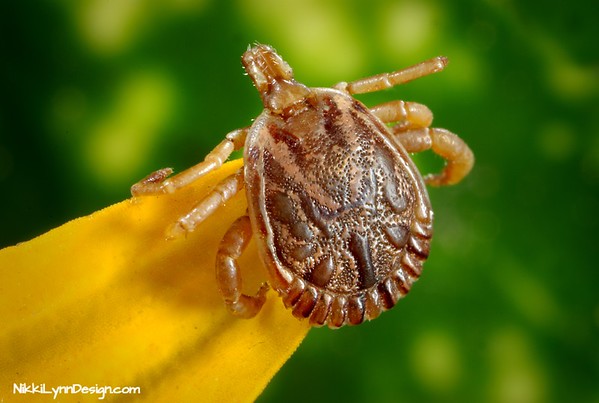
Another name for this tick is the American dog tick. Give you two guesses as to why they are called that.
It is one of the most common types of ticks in Wisconsin and you guessed it, often found on dogs after hunting and frocking in the long grass
2.) Deer Tick
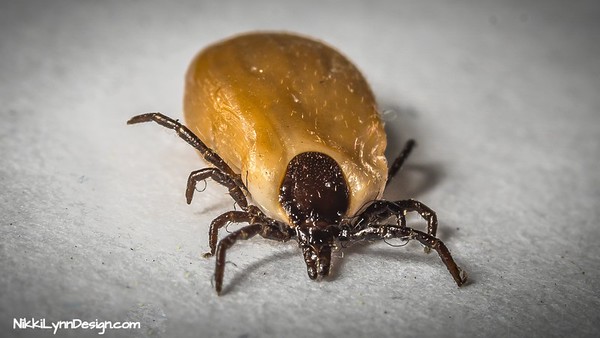
Deer ticks are known to transmit Lyme Disease. They are the smallest of the tick varieties.
This one is filled with blood. Normally, they are dark brown.
3.) Lone Star Tick
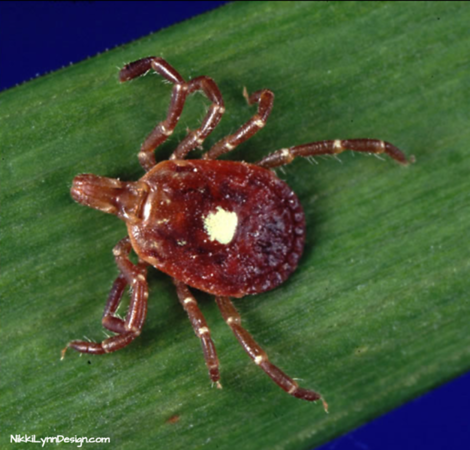
The female can be easily spotted by the white spot on her back.
This bugger has me a little concerned. Note the word concerned, and not feared. Reports have surfaced and confirmed through a variety of sources that a bite from THIS variety can cause an allergy to proteins. Meaning, that a person could never eat animal protein in their life again.
I haven’t ever seen one in my area of Wisconsin. Scary, and worth knowing about for travel purposes but allergies are still rare at this point.
Remove Ticks Properly
- If you find a tick attached to your skin, use fine-tipped tweezers to grasp the tick as close to the skin’s surface as possible.
- Pull upward with steady, even pressure. Thoroughly clean the bite area and your hands with rubbing alcohol, an iodine scrub, or soap and water.
Should The Threat Of Ticks Prevent You From Enjoying the Great Outdoors?
No. Even though a person could place great fear in such a little creature, Just educate yourself and take some precautions so you know how to protect yourself, your children, and your pets.
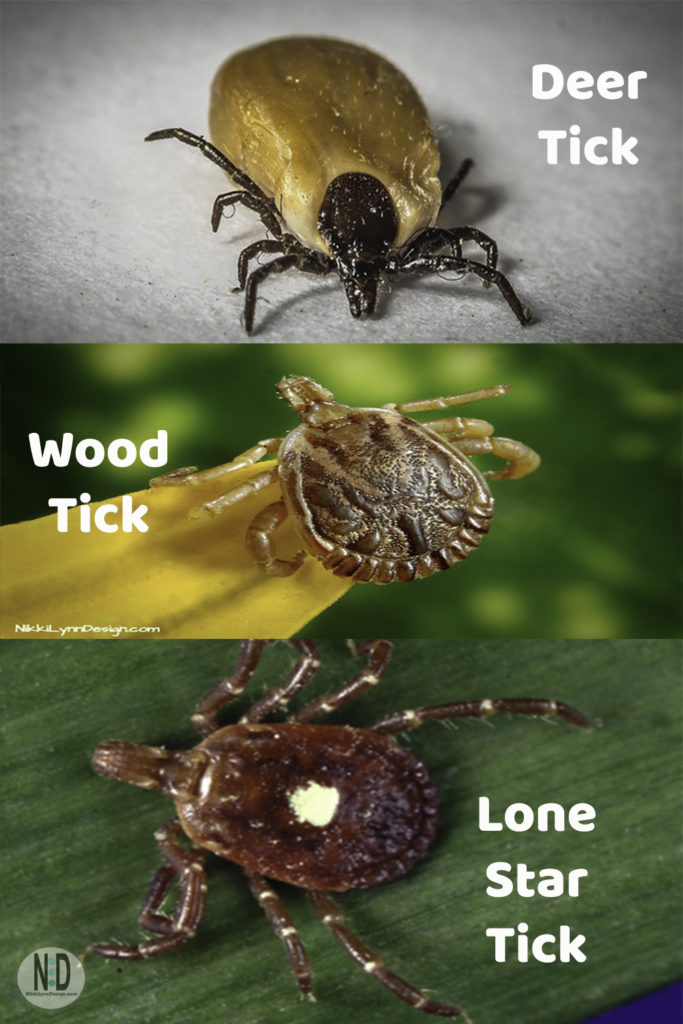
Remember, early detection and removal of ticks can significantly reduce the risk of tick-borne illnesses. If you develop symptoms like fever, rash, or flu-like symptoms after a tick bite, seek medical attention promptly.
AFFILIATE POLICY: Posts on this site may contain links to outside vendors that pay me a commission when you purchase from them, at no additional cost to you. Thank you for supporting this site!
